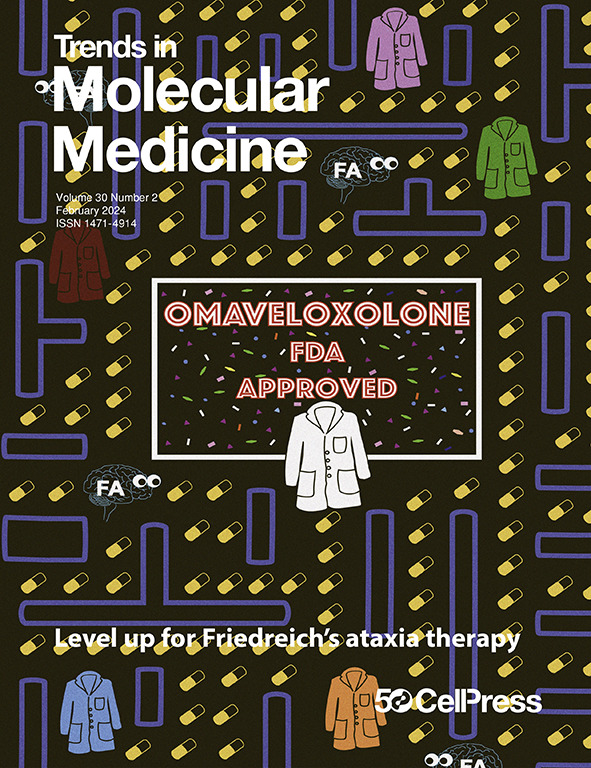裸体鼹鼠:核心所在。
IF 12.8
1区 医学
Q1 BIOCHEMISTRY & MOLECULAR BIOLOGY
Trends in molecular medicine
Pub Date : 2024-10-01
Epub Date: 2024-05-29
DOI:10.1016/j.molmed.2024.05.008
引用次数: 0
摘要
Faulkes 等人最近发现,裸鼹鼠与其他非洲鼹鼠相比,心脏基因表达谱非常独特,而且由于长期暴露在缺氧环境中,它们的新陈代谢也发生了变化。这些适应性可能是它们抵抗心脏缺血性损伤的基础。本文章由计算机程序翻译,如有差异,请以英文原文为准。
Naked mole-rats: at the heart of it.
Faulkes et al. recently showed that naked mole-rats (NMRs) have a very distinctive cardiac gene expression profile among other African mole-rats, as well as metabolic variations that result from their chronic exposure to a hypoxic environment. These adaptations might underlie their resistance to cardiac ischemic injuries.
求助全文
通过发布文献求助,成功后即可免费获取论文全文。
去求助
来源期刊

Trends in molecular medicine
医学-生化与分子生物学
CiteScore
24.60
自引率
0.00%
发文量
142
审稿时长
6-12 weeks
期刊介绍:
Trends in Molecular Medicine (TMM) aims to offer concise and contextualized perspectives on the latest research advancing biomedical science toward better diagnosis, treatment, and prevention of human diseases. It focuses on research at the intersection of basic biology and clinical research, covering new concepts in human biology and pathology with clear implications for diagnostics and therapy. TMM reviews bridge the gap between bench and bedside, discussing research from preclinical studies to patient-enrolled trials. The major themes include disease mechanisms, tools and technologies, diagnostics, and therapeutics, with a preference for articles relevant to multiple themes. TMM serves as a platform for discussion, pushing traditional boundaries and fostering collaboration between scientists and clinicians. The journal seeks to publish provocative and authoritative articles that are also accessible to a broad audience, inspiring new directions in molecular medicine to enhance human health.
 求助内容:
求助内容: 应助结果提醒方式:
应助结果提醒方式:


